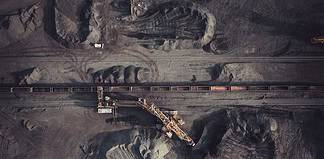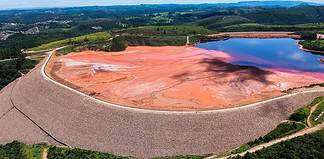By Samantha James
WHEN BHP Billiton demerged its nickel, coal, manganese and alumina assets into South32 in May 2015, it claimed established operations and low debt would keep the new company afloat in the slumped market environment.
The market expectation was that BHP’s spinoff would be worth around US$15 billion, however shares dropped from its listing price of $2.05 to an average of about $1.4 in September and early October due to low returns on commodity prices and in reaction to South32 impairing assets within its South Africa Energy Coal business and its Cerro Matoso nickel mine.
As a result, analysts estimated a slide in value of around US$10 billion and a 27.7 per cent drop in share value since listing.
Despite record production at four of the demerged operations during fiscal 2015, South32 posted a loss of US$919 million in profit after tax in its maiden annual report.
South32 chief executive Graham Kerr said he was not deterred, and was instead looking at the positives – record production at four assets, a 56 per cent increase in pro forma earnings before interest and tax to US$1 billion and 41 per cent jump in underlying earnings to US$575 million.
South32 planned to reduce controllable costs by at least US$350 million by the end of fiscal 2018, expecting to deliver a 25 per cent reduction in group and unallocated costs in 2016.
Assets
South32 holds interest in manganese, aluminium, silver and coal operations across Australia including the world’s largest producing silver mine, Cannington, and the long standing Worsley alumina operation.
It also holds three metallurgical coal mines in NSW and manganese mines and smelters in Tasmania and the Northern Territory.
Worsley, one of the largest and lowest-cost alumina refineries in the world, produces around 3.8 million tonnes per annum of alumina and exports its products to South32’s Hillside and Mozal aluminium smelters in South Africa.
Outside of Australia the company holds the Cerro Matoso nickel mine and ferronickel smelter in northern Colombia, which has been operating for more than 33 years. However, during 2015 South32 was forced to write off mine and smelter, losing US$41 million pre-tax.
South32 also owns 35 per cent of the Alumar refinery and 40 per cent of the associated smelter in Brazil.
Despite a record year of saleable production as the refinery exceeded nameplate capacity, saleable aluminium declined by 62 per cent after South32 decided to suspend production from one of the potlines in April 2015.
In addition, the company produces aluminium, coal and manganese in South Africa and Mozambique. Under the umbrella of South Africa Energy Coal, it holds four primary coal mining operations and a coal processing facility.
In fiscal 2015 South32 adjusted the carrying value of the Wolvekrans Middleburg Complex – part of its South Africa Energy Coal assets – reporting a loss of US$551 million pre-tax, despite an overall saleable production increase of 3.9mt for the year.
Low prices during the year dampened record production at South32’s South African manganese operations and Illawarra metallurgical coal mines in NSW.
As a result, the company decided to temporarily suspend its cash flow negative downstream Metalloys manganese facility in South Africa (later restarting only one of four furnaces) as well as the smelter at its Brazil aluminium project.
In August South32 started a review of its South African manganese operations, justifying the move as a reflection of the company’s “commitment to maximise financial performance per share, rather than volume”.
South32 reported a fatality at its Hillside aluminium refinery in May 2015; it was the second fatality at a South32 asset during the financial year, with BHP reporting a fatal incident at WA’s Worsley alumina operations in September 2014 (prior to the demerger).
In July 2015 a third fatality occurred at the South32’s South African aluminium operations.
Incident management teams were sent to site in both instances and full investigations were carried out, but Mr Kerr acknowledged more had to be done across the business to improve its safety performance.
He assured investors South32 was “sharpening [its] focus on material risk” while building a “safety culture”.
“The loss of any colleague is unacceptable and we must do more to ensure that every person goes home safely at the end of their shifts,” he said.
A positive first quarter
Despite facing operational and financial difficulties in the first half of the year, South32’s September quarter results were positive, marking an optimistic start to fiscal 2016.
Quarterly production records were achieved at South32’s Australian manganese and Illawarra Coal assets, and 20 per cent more silver was produced at Cannington due to a temporary increase in grade. Worsley also increased alumina output by 11 per cent due to completion of planned calciner maintenance.
In the September quarter the company reduced its net debt by US$206 million to US$196 million.
The ongoing review at its South African manganese operations was expected to be completed by the end of December 2015.
South32 confirmed the delay in the restart of three high-carbon ferromanganese furnaces at Metalloys would continue indefinitely while it decided on the fate of the fourth furnace upon completion of the review.
As part of the process, South32 would determine “the optimal configuration and production profile” to improve sustainability at its South African operations.
South32’s production guidance across 2016 was generally on par with 2015 results – it expected around 131,000t more alumina from Worsley at 3.95mt and only 8000t less in Brazil, anticipating 36,500t of nickel.
South32 also anticipated a decrease in output from its South Energy Africa Coal assets as the Khutala open cut mine wind down and pits at Wolvekrans are sequenced.
Long term plan
Mr Kerr said South32 had strong plans to reduce sustaining capital expenditure by 9 per cent ($67 million) to $650 million next year and controllable costs by US$350 million per annum for the next three years.
Expenditure would include $50 million on major projects including the start of production at the Appin Area 9 replacement mine in NSW.
The new mine is part of South32’s Illawarra Coal operations and due for commissioning in the second half of 2016.
It would be completed at about 20 per cent below the initial $845 million budget.
“We have hit the ground running since becoming an independent, stand-alone company,” he said.
“Our regional operating model and teams are in place, we are right-sizing our systems and processes, and driving the necessary cultural change across the group.”
As part of its regional operating model, South32 closed four offices across Australia in 2015 and reduced contractor usage and rates, while optimising equipment, labour productivity and energy fuels.
Together with “broader cost saving initiatives”, Mr Kerr said these actions were already delivering results.
“By optimising the performance of our existing assets, converting high value brownfield resources into reserves, and identifying new opportunities, we will maximise return on invested capital and deliver sector-leading total shareholder returns.”








































